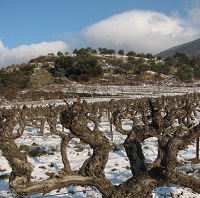
Heading south from Lyon in the Rhone Valley, the landscapes, agriculture and architecture of Provence gradually assert themselves. Before long we’ve entered Cotes du Rhone territory: Saint Joseph, Hermitage, Crozes-Hermitage.
We continue on to Valence. This small city that isn’t quite Provence but even on a mid-winter’s night when the temperature falls below freezing and the café chairs are stacked tall against the wall, there’s no mistaking the affinity of the pastel buildings and gnarly plane trees of its old town square with central squares further south.
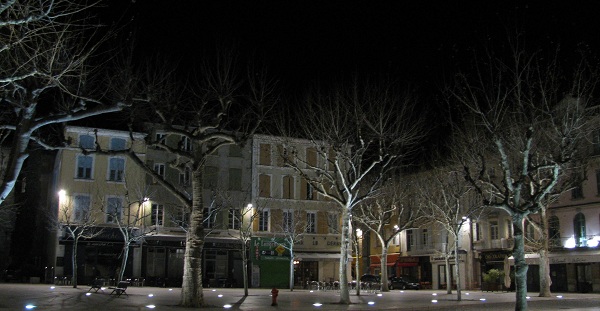
Spring and summer travelers are still at home planning sunny vacations as we drive further south to the village of Grignan, whose castle stands cold and silent above the village.
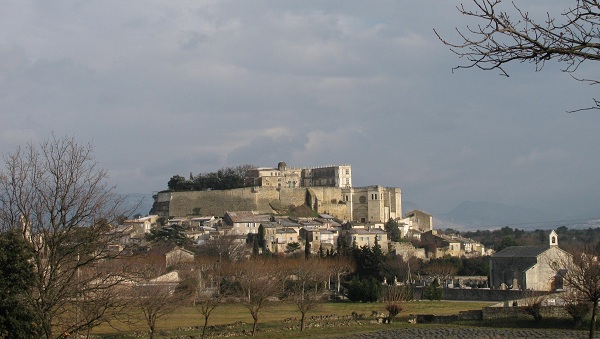
It’s snowing as we venture out onto the terrace of the castle to look out over the dormant lavender fields. If it’s lavender then it must be Provence, n’est ce pas? Indeed, we are in the southern portion of the department called Drôme, a zone known as Drôme Provençale.
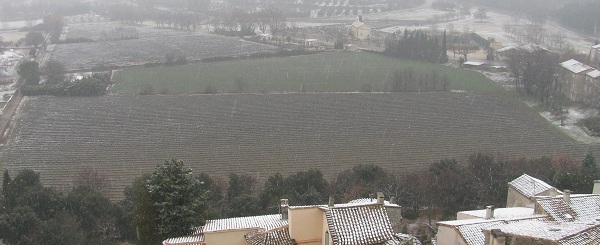
Nothing says Provence more than an image of flowering lavender fields in July, certainly not this field of white and green oaks in winter (below). Still, this landscape is a thing of beauty for he who farms and hunts for truffles here, for while the lavender fields await sun and warmth, the soil is still alive enough to give birth to truffles, pungent fungi known as black diamonds or black gold.
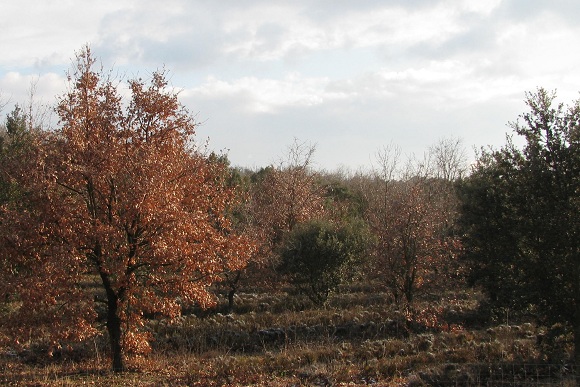
From mid-November to mid-March, truffles develop unseen and seemingly haphazardly, and when ripe their odor can be detected by specially trained dogs.
The week’s hunt, whether in the wild or on one’s own plantation, can be sold at the Saturday morning (mostly) wholesale market in Richerenches, five miles south, in what is unmistakably Provence (Vaucluse). This winter’s crop of the prestigious tuber melanosporum, known here as the black truffle of Tricastin, has been selling for $500-550 per pound (800-900€/kg), depending on the week, with a pre-Christmas peak of $730 per pound (1200€/kg). The lesser tuber brumale has been goes for about $245-290 per pound (400-500€/kg). Prices are naturally higher at the retail market held on Sunday mornings in Saint-Paul-Trois-Chateau.
Fifteen miles east of Grignan, the old vines of this Côtes-du-Rhone vineyard take a well-deserved rest, as do the even older olive trees—producing appellation Nyons olives—on the hill in the background.
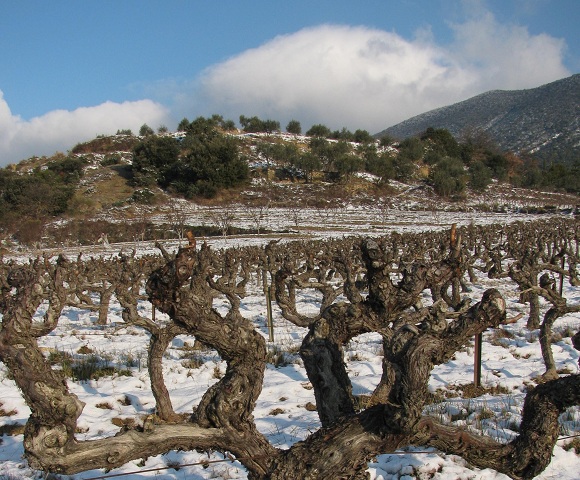
We go inside for the tasting. No need to wait for warm weather for a taste of Provence in Drome Provencale.
© 2012, Gary Lee Kraut (photos and text)


What a beautiful and unexpected view of Provence!
I will bicycle in the area during the last week of April and the first two weeks of May auditing routes for my next guidebook (hope the snow gets replaced with wildflowers). Thanks for the preview.
I enjoyed your blog. We usually come to Paris in February because I’m one of those strange people who love Paris in
the winter. But my wife insisted that this year she wanted to
be in Paris during the fall, so we’re going in October. It’s a good
thing that I usually listen to her.
David C. Hoopes